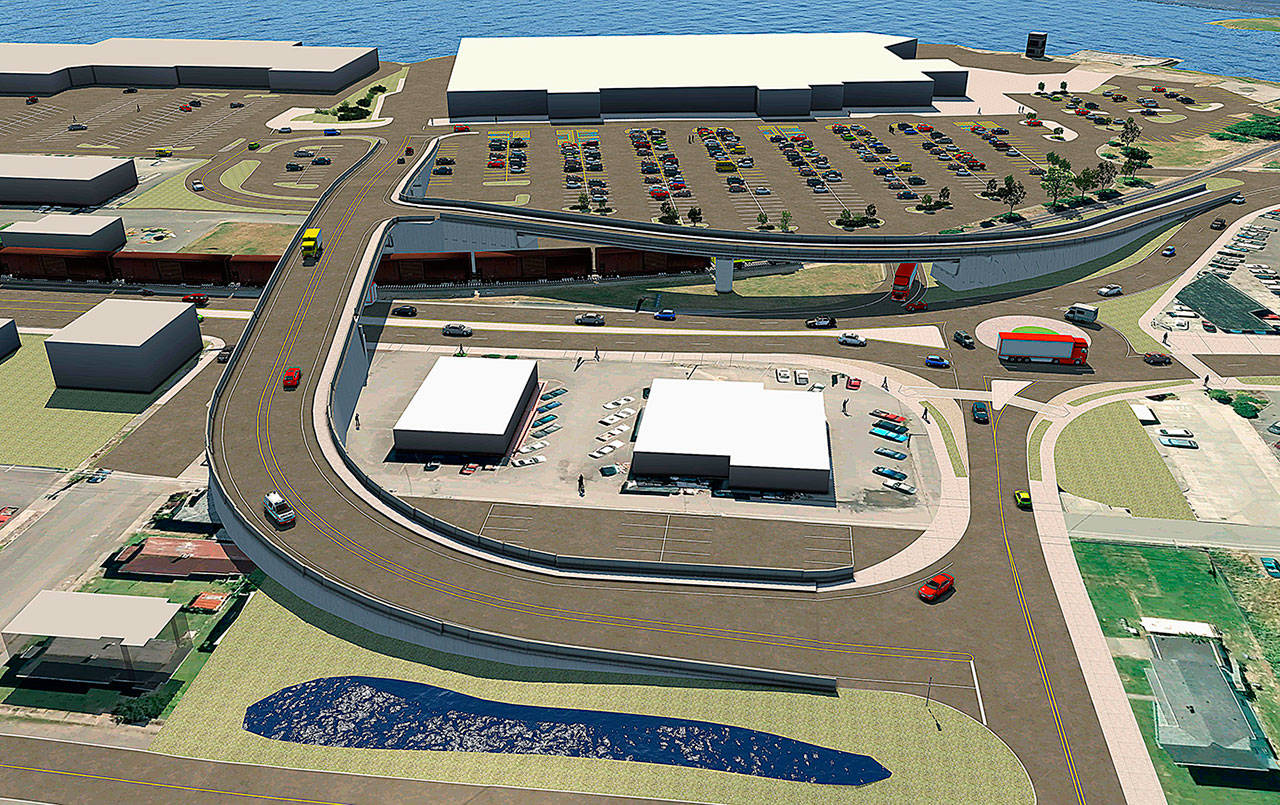Aberdeen and Hoquiam have teamed up to hire a lobbying firm to help secure funding from the Legislature for major projects in what is certain to be a tight state budget year.
Wednesday, the Aberdeen City Council unanimously approved entering a shared services agreement with the City of Hoquiam to hire Gordon Thomas Honeywell Governmental Affairs to represent the interests of both cities in the 2021 legislative session.
“This is a reputable company that has been doing this type of work for a long, long time and been pretty successful at it,” said Aberdeen Mayor Pete Schave. “Both Hoquiam and Aberdeen have looked into them, checked them out, and I think it’s a great opportunity that two cities are working together to accomplish good things. I’m happy to see this.”
The Hoquiam City Council approved the agreement at its Monday meeting. A report to the council listed a likely group of issues of focus for the firm “where the two cities have been working in cooperation or are specific to the City of Hoquiam.”
The contract for the 2021 session is for $15,000 split between the two cities — $7,500 each — between January and May.
“There is a little cushion in each city’s authorized budget should the session goes longer or there is some other unanticipated expense,” said Hoquiam City Administrator Brian Shay.
A large focus of the efforts will be placed on funding for the North Shore Levee, a flood-prevention barrier along the north side of the Chehalis River, stretching just under six miles from the west shore of the Wishkah River to the east shore of the Hoquiam River. It would remove thousands of properties from the mandatory federal flood insurance requirement.
Also seeking substantial funding is the West Segment North Shore Levee, designed to take up where the North Shore Levee ends and protect more properties in Hoquiam.
“We’re seeking as much as $25 million this session for the two levee projects, and it would be huge for the city to come though at that level or anywhere close,” said Shay. “If we get an additional million on the levee budget from the (cost of the lobbying firm) I’d say it’s a good investment.”
Monday, the Hoquiam City Council got an update on the city’s FEMA Building Resilient Infrastructure and Communities (BRIC) program grant application for the West Segment, which was filed late in December. Shay said he believed the city has “a legitimate shot of getting that grant.”
“In a perfect world we’d get just under $30 million in federal funding, and be responsible for $11 million,” said Shay — the grant is a 75% grant, which means the city would have to match 25%. The lobbying firm hired by both cities will be pressing the Office of the Chehalis Basin and the Legislature to collect some of those matching funds.
“If we get it it will pay for design, permitting and construction of the West Segment North Shore Levee,” said Shay.
While Aberdeen did not list its priorities specifically Wednesday, Hoquiam’s list included the levees and the Aberdeen Grade Separation Project. The grade separation project would significantly modify the traffic flow through east Aberdeen, separating the roadway and railroad tracks east of the Wishkah River, alleviating safety and traffic concerns with current train and vehicle congestion.
Wednesday, the Aberdeen City Council adopted a report authorizing Schave to execute an agreement with the state Department of Transportation Rail, Freight and Port Division for $693,000 in funding for the rail separation project for work including preliminary engineering and environmental compliance. The funding was approved by the state in the 2020 state supplemental transportation budget.
Hoquiam is also looking for funding through the state Conservation and Recreation Office for the development of a community forest.
In October, the City of Hoquiam applied for a $3 million community forest grant to purchase four parcels of land totaling about 400 acres within city limits for a community forest, which would be managed for forestry and could include trails, bike paths and other public recreation opportunities, along with a sustainable revenue source for the city through timber sales.
Monday, Shay told the council that he had hoped for a higher allocation to that fund than what ended up in the governor’s proposed budget. He said the firm “might be working with the House and Senate to see if they can get the total dollars for that program to be higher,” but the main focus would remain funding for the levees.
Among the priorities for Hoquiam is continued funding for improvements to Olympic Stadium, said Shay, through the state’s capital budget. The report to the City Council also listed as priorities as youth athletic programs and working with the Legislature to find ways to adjust the state’s permitting process “to provide clarity, certainty and reasonable timelines.”


